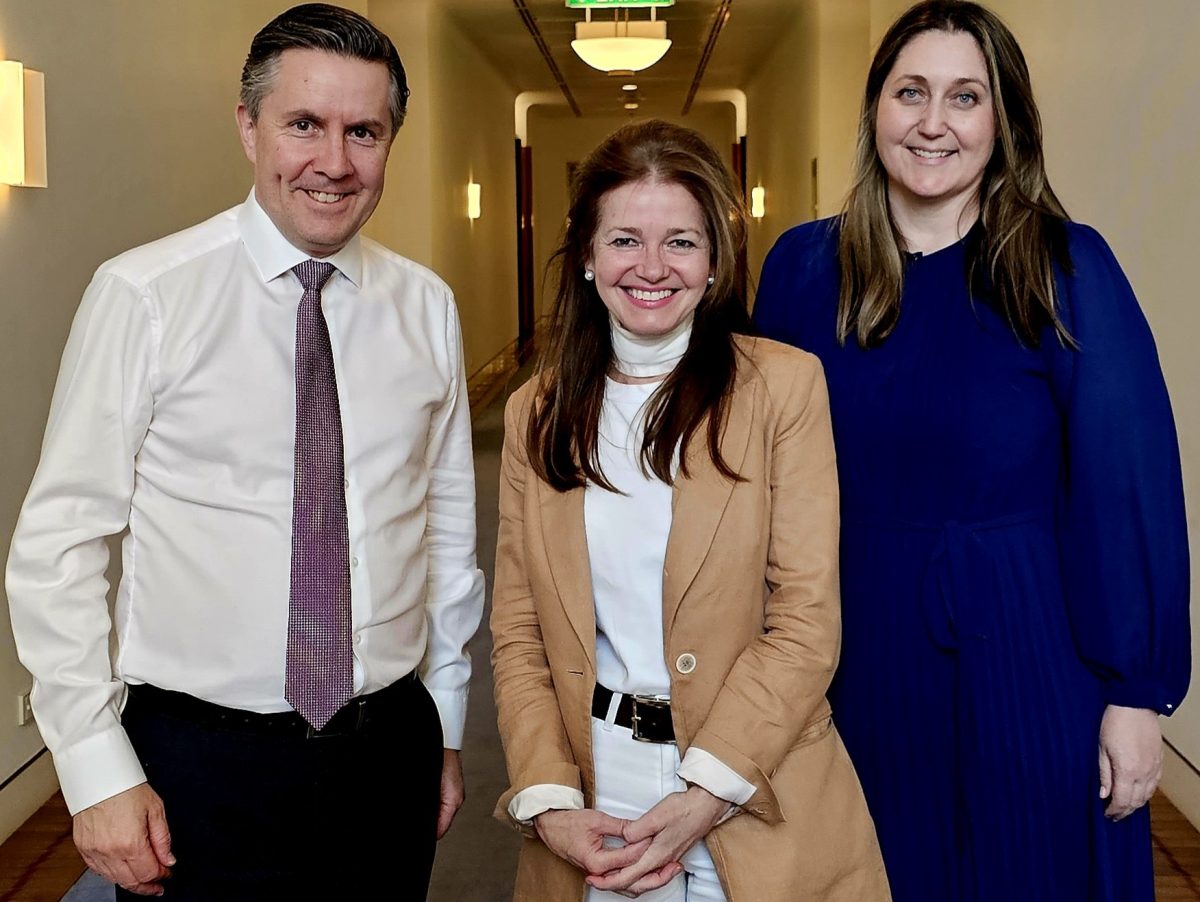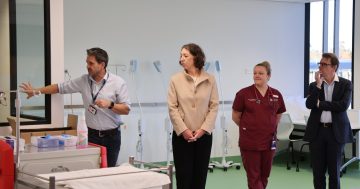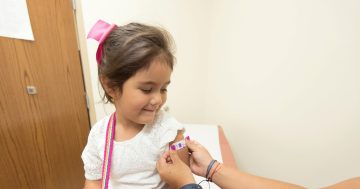
In September, National Rural Health Alliance CEO Susi Tegen (centre) met Minister for Health and Aged Care Mark Butler and Assistant Minister Emma McBride to discuss, among other things, a National Rural Health Strategy. Photo: NRHAlliance.
Several recommendations of the National Rural Health Alliance have been included within a final Senate report seeking to address the provision and access to dental services in Australia. In August, the Alliance told a Senate Select Committee in Launceston that the country’s health system was failing to support the oral health of the seven million people residing outside major cities.
According to the Global Burden of Disease report in 2019, the most common chronic disease in Australia is tooth decay (dental caries) in permanent teeth. Rural Australians, representing 30 per cent of the population, are overall more likely to suffer from the condition because they have fewer dentists per capita than their city counterparts.
Currently, there are three times more dental practitioners in metropolitan regions than in remote Australia, which is a disparity the alliance views as unacceptable and in violation of these communities’ right to access primary health care.
The Alliance’s submission to the Senate report in June noted that oral health is fundamental to a person’s health, wellbeing and quality of life.
“Good oral health is important for a person to eat, speak and socialise. Poor oral health can lead to diseases such as tooth decay, gum disease, tooth loss, cardiovascular disease, diabetes and stroke and can result in pain, disability and even death,” the submission said.
”Other consequences include time off work and school, and the cost of dental treatment.”
Also credited for this gap in health care are geographic isolation, transport costs, a lack of water fluoridation and oral health preventive measures.
While it’s understood that most healthcare services generally decline as remoteness increases, the alliance believes more support for rural communities is needed right now – especially amid a cost-of-living crisis.
CEO Susi Tegen said it was pleasing to see that many of the Senate recommendations specifically mentioning rural and remote oral health aligned with the alliance’s proposals.
“We recommend the government increase and implement appropriate funding mechanisms to support flexibly funded and delivered public oral health services in rural communities,” she said.
“The alliance calls on the federal and state governments to commit to the recommendations of the National Oral Health Alliance, of which the alliance is a member, as well as commit to a National Rural Health Strategy to bring scattered and inconsistent rural health initiatives under one umbrella.”
Among the proposals mentioned in the Senate report are support for training programs, recruitment and retention for dental health professionals, including public health clinics where they are especially needed.
The report also acknowledged the Primary Care Rural Integrated Multidisciplinary Health Services (PRIM-HS) model. If funded appropriately, the alliance said it would give multidisciplinary teams in rural areas more support and greater access to dental and oral health practitioners.




